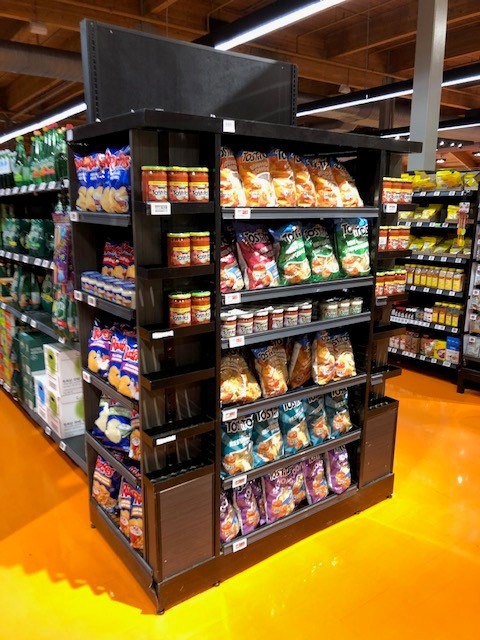Who’s next to you on the shelf?
To successfully build a brand, it’s essential to have a thorough understanding of what products are shelved adjacent to your product. All the research and development that is put into packaging, logo design and new product development is not being optimized if shelf adjacencies are not taken into consideration.
Successful brand builders evaluate packaging and logo design in-situation and take these factors into consideration.
Here are four main adjacency factors that can affect your brand positively or negatively:
- Price: CPGs must consider price within the context of competitors as well as behaviorally how a shopper will scan a shelf. Retailers strategically place higher-priced or higher-margin items at eye level—the most sought-after space—while positioning lower-priced items lower on the shelf. Typically, when shopper’s eyes scan a shelf, their eyes tend to go from the upper left to the lower right so understanding the context of pricing on a shelf and how a shopper will view a shelf can impact your brand perceptions. A familiar behavioral science concept is price anchoring which clearly comes into play with adjacent products.
- Category Placement: Usually your product is placed in the same section with other products that are similar. But sometimes it’s not that simple. For example, I’m often looking for wheat bran to bake muffins and my natural inclination is to look in the baking aisle. To my surprise, it’s actually kept in the breakfast cereal aisle. It’s really up to the retailer where your product fits in. If you have a product where it’s not clear where it should go, it may be placed differently at different retailers. Understanding what these different placement options are and testing the impact of different locations can help you optimize your brand based on location.
- Planogram Blocking Strategies: Different retailers may have different blocking strategies, for instance, some retailers may organize the shelf by size and this may disrupt your brand block making it difficult to maintain a consistent brand impression. There are also different blocking strategies that will impact how your package is viewed such as horizontal versus vertical blocking and grouping by package format (bagged versus boxed products). How the shelf is organized and the products that are adjacent to your brand will influence shopper perceptions and viewing of your product.
- Competitive Packaging: Differentiating yourself from direct competitors is critical if you’re placed close together. Careful consideration of package color, shape and size in relation to competitors should be considered. Packaging should always be tested in situation to understand the impact of the products that are adjacent to your brand.
End Caps and Shelf Adjacencies
Another area where adjacencies are also important is with end caps. Shoppers use end caps in several ways: 1) to signal what products are in the aisle 2) to see what is on promotions and 3) for bundled ideas or promotions. The impact shelf adjacencies have for end caps is important for several reasons:
- A better shopping experience
Customers are always pressed for time. By placing products that are related to the products in the aisle on end cap merchandising it can be used as a guide to the store layout. Shoppers logically expect to find products in the aisle that are related to the product they find on the end cap. If they go down the aisle and don’t find it, you end up with a confused and frustrated customer.
- To help grow categories in-store
By pairing items that naturally complement one another in an end cap display, retailers and manufacturers can increase basket size, sales and profits. For instance, honey could be paired with tea on an end cap display. Natural pairings of products together can help drive impulse sales.

Salsa is paired with tortilla chips on an end cap display
- Provides convenience and solutions to shoppers
By offering shoppers multiple products in one area, they won’t have to go looking for them. This ties into the idea of creating a better shopping experience, but it’s more than that. Retailers can also increase sales by understanding shopper behavior such as the convenient need for meal solutions at the front of the store where shoppers can run in and by multiple categories in one area (main meal, beverage, sides, etc.).
Shelf adjacencies are a very important factor in how your product is perceived by the shopper. Understanding the context of where your product is located in-store and the factors of price, competitive context and location will change how your product is viewed and perceived and ultimately purchased.
